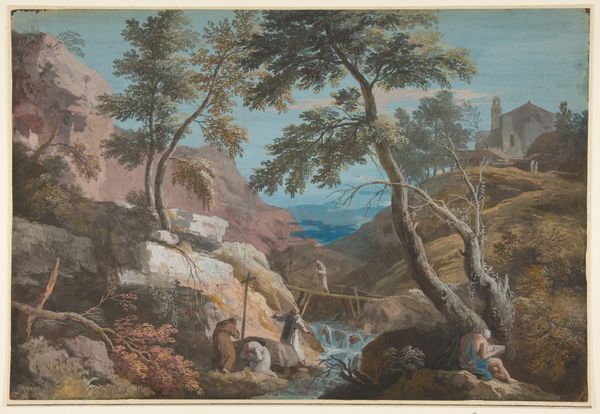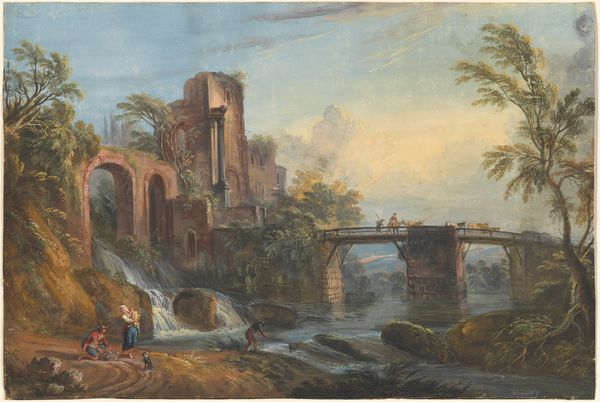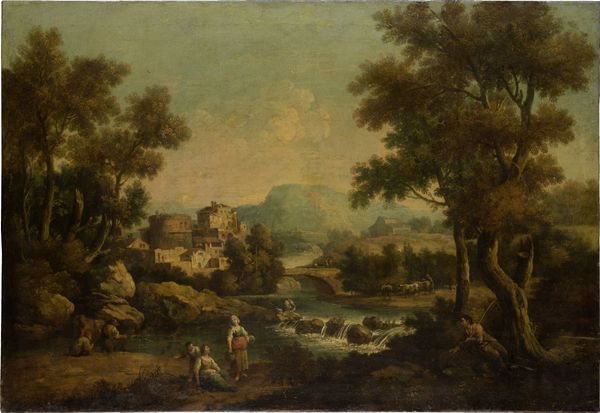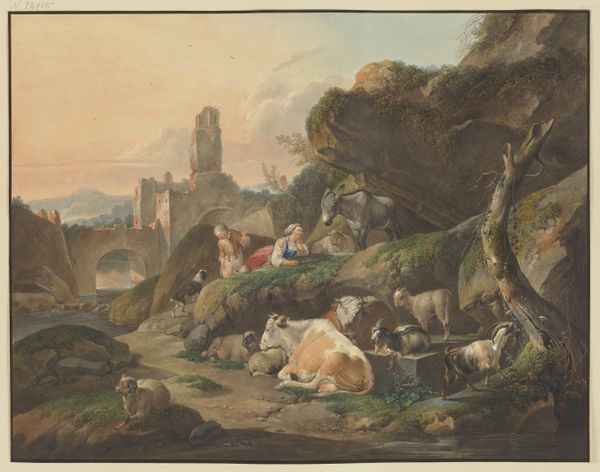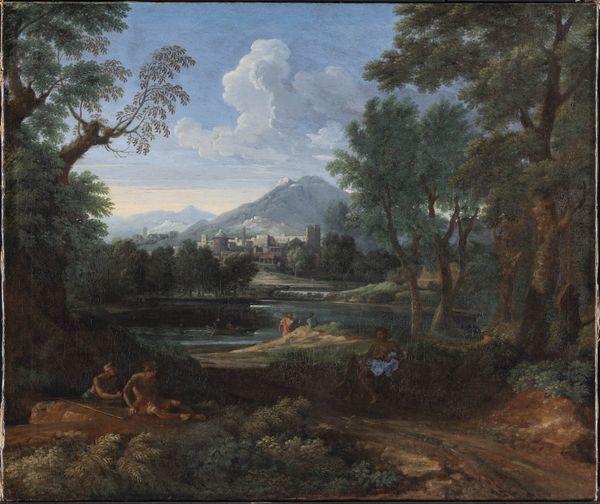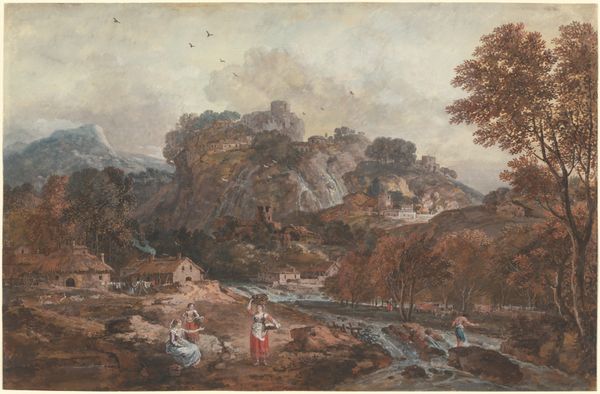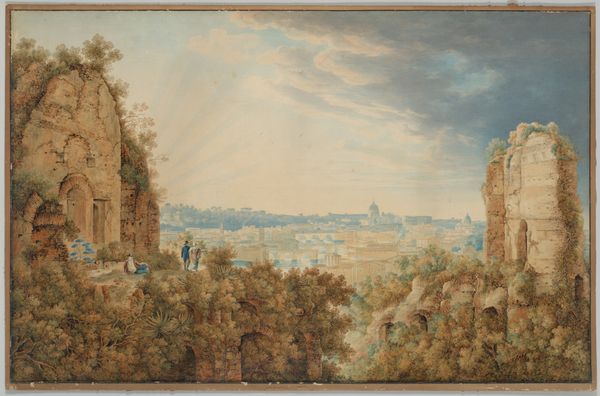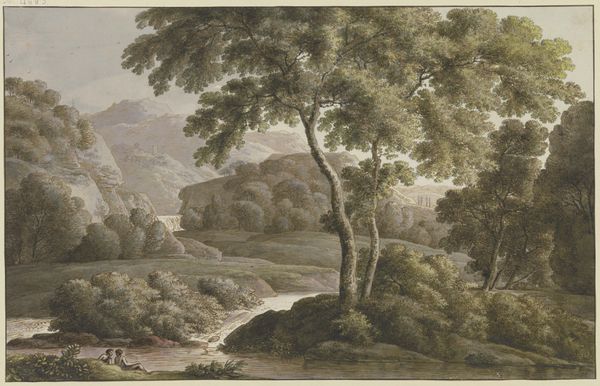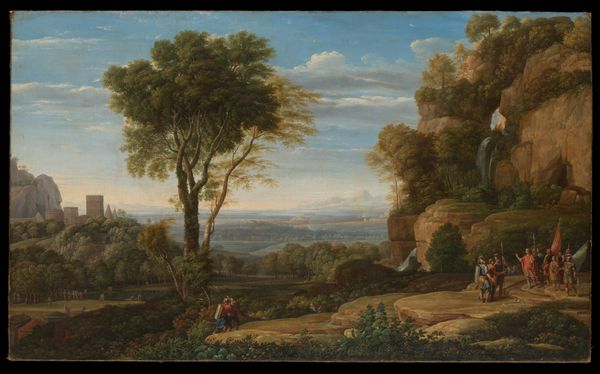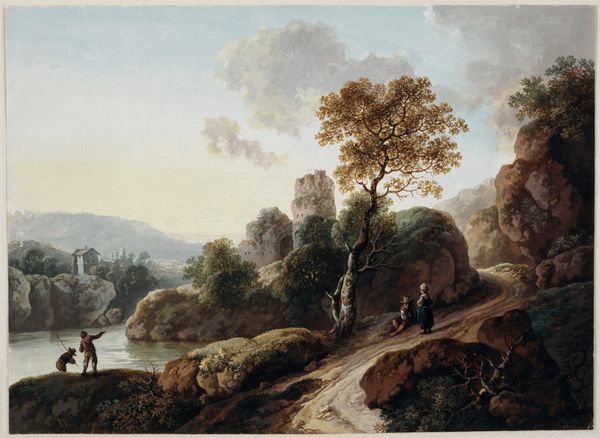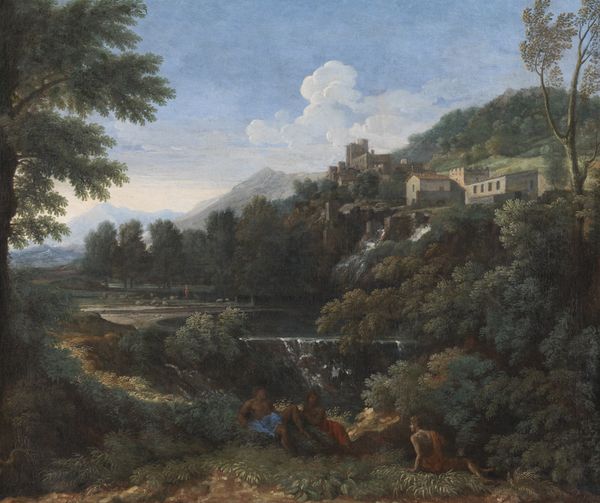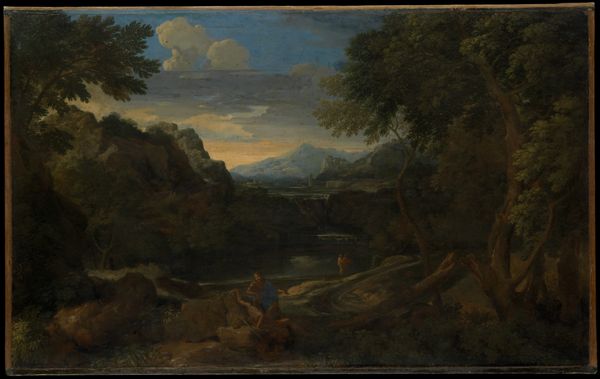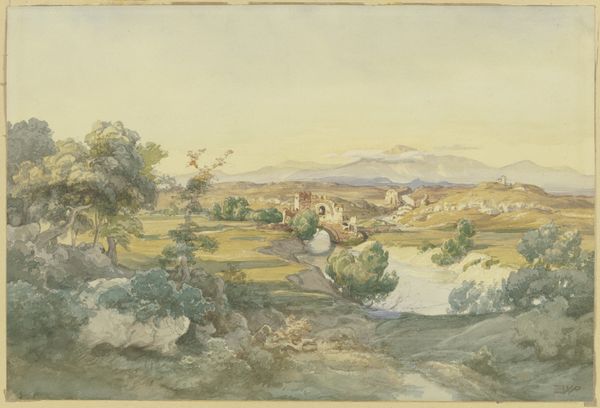
drawing, tempera, red-chalk, paper, watercolor
#
drawing
#
16_19th-century
#
tempera
#
red-chalk
#
landscape
#
paper
#
handmade artwork painting
#
oil painting
#
watercolor
#
german
#
romanticism
#
watercolour illustration
#
genre-painting
#
italian-renaissance
#
watercolor
Copyright: Public Domain
Ernst Fries painted this Italian mountain landscape with watercolor, likely in the 1820s. Notice the prominent stone bridge arching across the river. The bridge, since antiquity, has served as a potent symbol of connection and transition, linking disparate spaces and ideas. Consider, for example, the Roman bridges, testaments to imperial power, or the medieval bridge chapels, where the sacred and profane met. Here, Fries uses this architectural motif to invite contemplation on the meeting of nature and civilization. The woman drawing water from the spring can be seen as an allegorical figure, an ancient gesture of life, where water symbolizes purity and renewal. The act of drawing water has been featured in countless myths and legends across cultures. Think of the nymphs of classical antiquity or similar figures in Renaissance paintings. It is not simply a depiction of mundane activity, but a powerful force engaging viewers on a deep, subconscious level, resonating with our shared ancestral experiences. We find this non-linear, cyclical progression of symbols throughout history, as they resurface, evolve, and take on new meanings in different contexts.
Comments
No comments
Be the first to comment and join the conversation on the ultimate creative platform.
